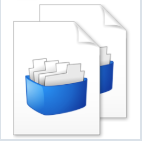
Amazon Translate MT provider
By Trados AppStore Team
Free
Description
This Amazon Translate MT provider allows you to retrieve translations from Amazon Translate Service AWS.
In order to be able to use this application, you will need to create an account with AWS.
For more information on how to set up the plugin and create an account-
please check the Documentation tab.
Technical details
5.0.2.0 - Trados Studio 2024
Changelog:
- Added support for the MT Comparison Tool Plugin by implementing the ITranslationProviderExtension interface.
Checksum: 27b19ca5d306159ee0191e0506ed25e5e659c866e9fc41bb9e3856db347857ac
Release date: 2025-03-28
4.2.1.0 - Trados Studio 2022 (SR2)
Changelog:
- Added support for the MT Comparison Tool Plugin by implementing the ITranslationProviderExtension interface.
Checksum: 019cf0b7adf51ed52f7ff8704a6e1b0f05cb4d2b12889992272a60edfc9080fd
Release date: 2025-03-28
3.1.5.0 - Trados Studio 2021
Changelog:
- Fixed tag handling issue & error: an item with the same key has already been added
Checksum: 8522a35a8c335a228006c8a05f923aaca3eec10216036370f7d813bfc711ef16
Release date: 2022-03-15
2.1.4.0 - SDL Trados Studio 2019
Changelog:
- Updated 2019 version to prevent installation into 2021
- Implemented TellMe/Updated path retrieval method
Checksum: 03df6c94df9cac93c0c110d6d0779ca7b7b5bd2acd5253ec97048ffa491762db
Release date: 2020-06-23
1.3.1.0 - SDL Trados Studio 2017
Changelog:
No related information.
Checksum: ca0e8f38f7af6477a19b7d8eba625ad53d54d0d2e77d69f020b91de246dd5895
Release date: 2022-12-08
Support website: https://community.rws.com/product-groups/trados-portfolio/rws-appstore/f/rws-appstore
Shared products:
Trados Studio 2024
5.0.2.0
- Added support for the MT Comparison Tool Plugin by implementing the ITranslationProviderExtension interface.
5.0.1.1
Resolved an issue where translations from Amazon were not provided when multiple Translation Providers were present in an SDL project.
Modified the plugin to prevent returning hardcoded translation results for already translated segments.
5.0.0.3
- updated to support Studio 2024
- Updated TellMe.
Trados Studio 2022 (SR2)
4.2.1.0
- Added support for the MT Comparison Tool Plugin by implementing the ITranslationProviderExtension interface.
Trados Studio 2022 (SR1+)
4.1.1.0
- Addressed breaking changes
- Sdl.Core.Globalization (Modified)
- Sdl.Core.Globalization.Async (Added)
- Sdl.Desktop.Platform.Controls.Behaviors.MouseDownBehavior (Deleted)
Trados Studio 2022
4.0.3.1
- Resolved issues reported ( Rebranding )
- Updated plugin manifest to ensure that the plugin will not attempt to install into Trados Studio 2022 SR1. This is important because the SR1 release contains breaking changes that will cause this version of the plugin to prevent Studio from starting. There will be a further update of this plugin specifically for the 2022 SR1 release either alongside, or shortly after SR1 is made publicly available.
4.0.0.0
- Updates related to Trados Studio 2022
Trados Studio 2021
3.1.5.0
- Fixed tag handling issue & error: an item with the same key has already been added
3.1.4.0
- updated plugin version to 3.1.4.0
- updated studio maxversion to 16.9
- updated author to "Trados AppStore Team"
- updated NuGet dependencies to the latest versions (AWSSDK.Translate, RestSharp, Sdl.Core.PluginFramework, Sdl.Core.PluginFramework.Buil
SDL Trados Studio 2019
2.1.4.0
- Updated 2019 version to prevent installation into 2021
- Implemented TellMe/Updated path retrieval method
SDL Trados Studio 2017
1.3.1.0
No related information.
Create an Amazon Account and set up the local account
To use the Amazon Translate Trados Plugin the first thing you must do is create an AWS account. Once you have done that you need to configure your account locally and to do this you need to download and install the AWS CLI (Command Line Interface). You can find more information on how to do this here in the AWS Documentation.
Once you have installed the AWS CLI you can run it by opening a windows command prompt and type in aws configure:
The first time you do this you will be prompted for four pieces of information (this is an example and not anything you should copy and type in!):
All of this information can be found in your own AWS account settings. It's recommended that you use the documentation provided by Amazon to get this information as they have explained in detail how to set this up here. They could also change the process so it's better to go back to AWS if you have any problems.
When you have completed all of this you will see something like the following if you run the aws configure command again:
Setting up the Studio plugin
Once you have set up your Amazon account correctly you can activate the plugin for your project. The steps are as follows:
Adding the provider to your project or default settings
In your Translation Memory and Automated Translation settings (Project Settings or File -> Options) add the provider by selecting it from here:
Adding your Amazon credentials
Authentication
Choose AWS auth type and select the authentication method you intend to use.
Access key / Secret access key.
All of these details need to be added or the plugin will fail to work:
Click on OK and the plugin will be added to your settings. Now you should be able to receive machine translation results from the Amazon Translate service:
Locally configured AWS profile
This method provides a way to easily maintain different profiles based on a configuration saved locally on your computer. To use this method you simply choose the Local AWS profile option and add the name of your profile in the Locally configured AWS profile field.
In this example we have used a profile called myprofile. The name of the profile can be whatever you wish and you can create as many as you like. But to use this you need to set this up in two files that are stored here: c:\Users\[USERNAME]\.aws\
These files will be created when you install the Command Line Interface and you can add the necessary information manually or by running this command in a command prompt (you would enter the name of your profile, here we used myprofile):
aws configure --profile myprofile
Add the appropriate information when prompted in exactly the same interface as earlier and the configuration files will be updated accordingly. If you wish to do this manually then the content of the config and credentials files would look something like this:
Other options
The plugin supports a few other options in a simlar way to those provided by the MT Enhanced plugin that is also available on the SDL AppStore:
- Re-send draft and translated segments
- Using this option causes all segments to be sent for translation regardless of the status. If you leave it unchecked, only untranslated segments will be sent.
- Send plain text only (no tags)
- If you use this option any tag information in the segment will be stripped from the source segment before it's sent to the machine translation service. If you don't use this and a segment in Trados Studio contains tags then these tags will also be sent to the translation service and converted back to tags in the target segment of Trados Studio.
- Do pre-lookup find/replace
- You can select a file containing specially formatted xml markup that indicates a list of find/replace pairs to be applied to the source text before it is sent to the MT service.
- Do post-lookup find/replace
- This is similar to the pre-lookup option, except that the find/replace pairs are applied to the target text after it is returned from the machine translation service.
Preparing the XML file for the find/replace options
Taken from the articles prepared by Patrick Porter in the original MT Enhanced plugin
How to create the necessary xml structure in a text file for batch find/replace lists?
You can use a text editor (e.g. Notepad) to create files containing the necessary xml structure for use as batch find/replace lists.
The plugin will apply these lists to the source text before sending to the machine translation service and/or to the returned translated text, depending on the options configured in the plugin settings form.
The files can be saved with any file extension. They must have the following structure:
The first node is <EditCollection>. It contains a list of <Items>.
The items list contains EditItem elements, each of which has two attributes Enabled and EditItemType.
The acceptable values for Enabled are true or false. If Enabled is “false” the plugin will ignore the pair. This parameter allows you to temporarily disable a find/replace pair without having to delete it from the file.
The acceptable values for EditItemType are plain_text and regular_expression. You can use regular expression matching/replacement by setting the EditItemType to regular_expression. For simple plain text replacements, it is best to set it to plain_text to avoid unexpected behavior or the need to insert any special regular expression escape characters. The plugin uses .NET regular expressions.
Each EditItem has two elements: <FindText> and <ReplaceText>. They represent the text to find and the replacement text, respectively.
Important: note that there are several special XML characters that will cause problems if you type them directly into the XML file as the values for FindText and ReplaceText.
If you need to search and replace things like HTML tags, or any other text containing the < and/or > bracket character, the brackets must be ‘escaped’ with < for <, and > for >. Also, the ampersand character (&) must be escaped with & to avoid problems. Escaping single quotes (') and double quotes (") in the text values is not absolutely mandatory, but it is a good idea in order to avoid any unexpected errors. Some XML editor programs will automatically escape these characters for you when saving the file.
After the list of EditItems nodes, the other nodes are closed with the corresponding closing tags: and .
Example
The following is a complete example of the content for a find/replace list file:
Here, there is one plain text pair specifying to find the string “Hello World” and replace it with “Hello world!”. There is also a regular expression pair specifying to find the regular expression “\bhello\b” (a whole-word match for “hello”) and replace it with “Hello!”.
You can copy and paste the example xml into a text file and modify it as needed. Add EditItem blocks for additional pairs and set the attributes and elements accordingly.
Keep in mind:
- The find/replace text specified is case sensitive, i.e., specifying “hello” will not find “Hello”. To find both, two separate EditItem elements are necessary.
- The replacement is a direct string replacement and not a whole-word search. For example, specifying “no” / “not” as a find/replace pair will cause the word “none” to become “notne”. To use whole-word matching, regular expressions are necessary.
- The replacements are performed incrementally in the order they appear in the file. Once a replacement is made, the next find/replace will be performed on the updated text. For that reason, with similar strings, it is better to place longer ones first. For example, if you have entries to replace “dogs” with “pets” and “dog” with “a pet”, place the entry for “dogs” first. Otherwise you may get unexpected behavior.
Alternative method for creating these XML files
It's worth noting that Spiros Doikas has created a blog post on how to create the find/replace files using Excel here: https://metafrastis.wordpress.com/2016/05/06/customise-machine-translation-in-sdl-studio/
Tell Me feature
Starting with Studio 2019 version, users are allowed to access the following actions using TellMe feature from Studio:
- Community Support
- Wikipedia documentation
- Download the plugin from the AppStore



















